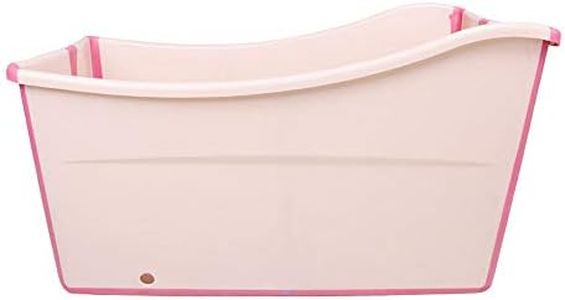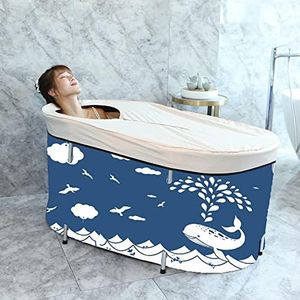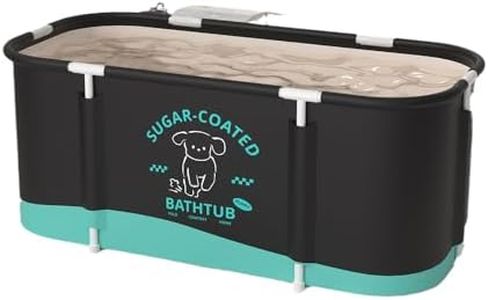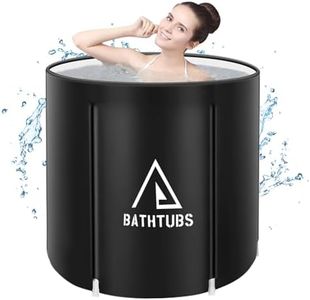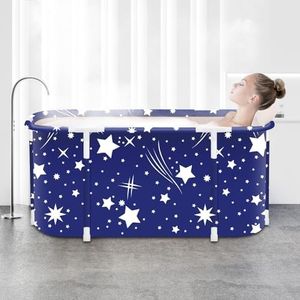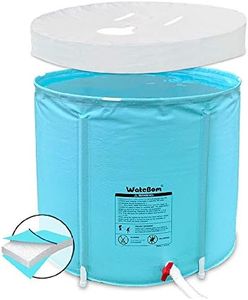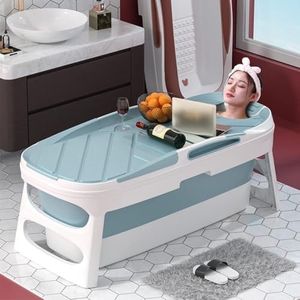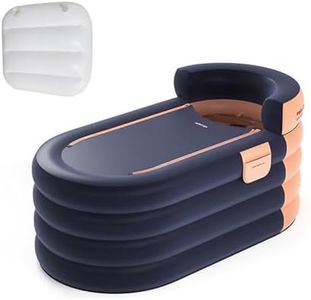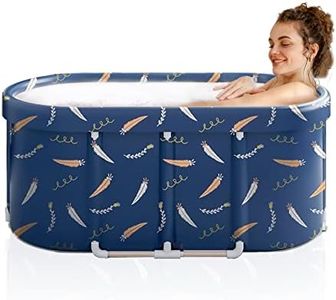We Use CookiesWe use cookies to enhance the security, performance,
functionality and for analytical and promotional activities. By continuing to browse this site you
are agreeing to our privacy policy
10 Best Freestanding Baths
From leading brands and best sellers available on the web.Buying Guide for the Best Freestanding Baths
Choosing a freestanding bath is an exciting way to add luxury and personality to your bathroom. Since they are designed to stand alone, these tubs are statement pieces and can significantly impact the style and comfort of your space. It's important to balance aesthetics with practicality, thinking about how the bath will look, how comfortable it is, and how well it fits in your bathroom. To choose the right freestanding bath for your needs, you'll want to consider several important features and specifications.Size and DimensionsThe size and dimensions of a freestanding bath refer to its length, width, depth, and overall footprint. This is crucial because it determines whether the bath will physically fit in your bathroom and how comfortable it will be for you to use. Sizes can range from compact baths suitable for smaller spaces or single users, to large and deep tubs that allow for a luxurious soaking experience. When deciding on the right size, measure your available bathroom space carefully, and think about how much room you want around the bath for movement and cleaning. Also, consider who will be using the tub—if taller individuals or couples will use it, a bigger and deeper tub may be preferable, while solo users in smaller bathrooms might prioritize a more compact model.
MaterialFreestanding baths are made from a variety of materials such as acrylic, cast iron, stone resin, and sometimes metal or even wood. The material influences the bath’s weight, heat retention, durability, and how easy it is to clean. Acrylic baths are lightweight, generally cost-effective, and retain heat well, making them a popular choice for many bathrooms. Cast iron or stone resin baths are much heavier, retain heat even longer, and often have a luxurious feel, but require a stronger floor and professional installation due to their weight. When choosing a material, think about the look you want (modern, traditional, natural), your ability to move and install the bath, and how important factors like heat retention, ease of cleaning, and long-term durability are to you.
Shape and StyleFreestanding baths come in various shapes such as oval, rectangular, slipper, and double-ended designs. The shape and style affect both the comfort of soaking and the bath’s overall appearance in your bathroom. Oval and round baths tend to have a softer, more organic look and are often associated with modern decor. Rectangular and slipper styles provide a more classic or vintage appeal and sometimes offer extra back support. Double-ended baths allow you to recline at either end, which is great for couples or for flexible bathing positions. When choosing, think about your preferred bathing experience, how the bath’s shape will coordinate with your bathroom’s design, and whether it will become a focal point or blend with existing features.
WeightThe weight of a freestanding bath varies greatly depending on its material and size. This is important because very heavy baths (especially those made of cast iron or stone) may require reinforced floors and special installation, while lightweight baths (like acrylic) are easier to move and install—even upstairs. Lighter baths may be better if you live in an older home or if access is tricky, while heavier, more solid baths can feel more luxurious and substantial. Consider the construction of your home and where the bath will go when thinking about the right weight for your needs.
Overflow and Drain PlacementThe overflow and drain are safety and functional features that control water flow and empty the bath. Some baths have centrally placed drains, while others have them at one end. Central drain and overflow allow for bathing at both ends, which is more comfortable for two people, while end drains may better fit certain designs or installation requirements. The style of the overflow—whether exposed or hidden—also impacts the bathtub’s look. When choosing, consider the comfort you want, the usual direction you’ll recline in, and ease of plumbing installation based on your bathroom layout.
Tap PlacementWith freestanding baths, taps (faucets) may be wall-mounted, floor-mounted, or mounted on the rim of the bath itself. This affects the look of your bath as well as the way you use it and the complexity of installation. Wall- or floor-mounted taps give a more open, uncluttered appearance, but may require additional planning for plumbing and installation. Rim-mounted taps are often practical and traditional but may limit available space on the bath’s edge. Your bathroom’s layout, your plumbing access, and your style preference should all guide your choice in tap placement.
